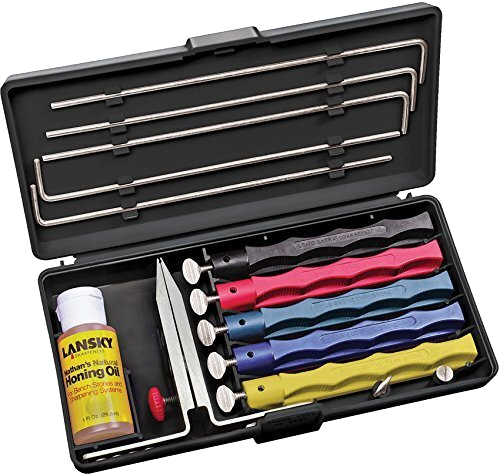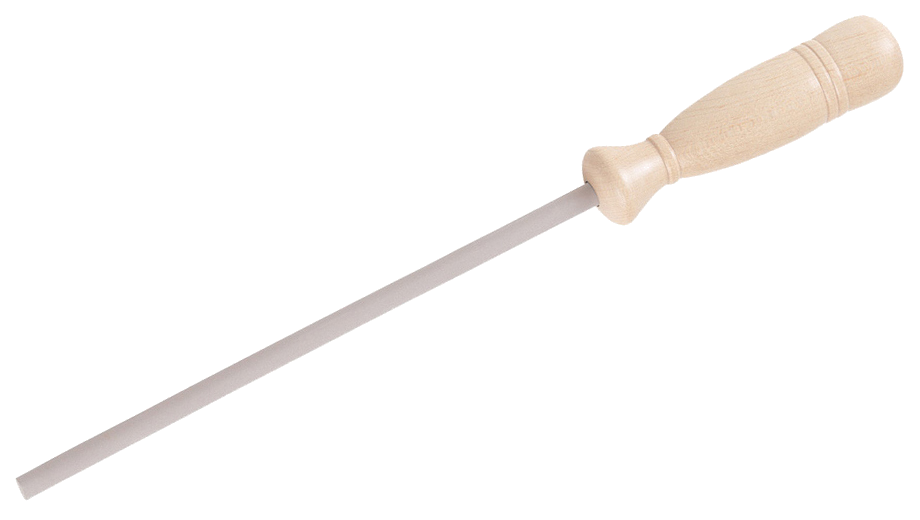
| Articles | Documents | Equipment | Events | Links | Membership | Miscellaneous | Scrapbook | Targets | What's New |
|
Bladeology Lansky Sharpeners | November 2018 | ||
| Dan Martinez
| |||
|
Using this method, I was able to sharpen knives to a degree, but never really “shaving
sharp” as was the goal. Often I would just keep going and going, always looking for
that fine edge, never really achieving it, but actually doing nothing more than grinding
away more and more of the blade.
Many years later, a co-worker introduced me to the Lansky Sharpening System. It’s very
similar to sharpening on an oiled whetstone, but the stones are attached to plastic
holders, which are in-turn attached to steel rods. You clamp the spine of the knife
blade into sort of an aluminum guide vise. The back of this vise turns at a 90° angle
and has several holes in it. When you insert the steel rod into one of these holes
(attached to a stone holder), this sets a given angle of stone against blade. The
stones come in several degrees of grit from coarse to fine. The kit comes with honing
oil, but you can use any light machine oil when you run out.
I used this system for many years, and it certainly seems to do the job, and gave me
greater confidence because it forces you to keep the sharpening angle constant.
But recently, my favorite sharpening system is a whole lot simpler. It is also by
Lansky, but all it is, is a round ceramic sharpening stick with a wooden handle. You
use it just like you use a sharpening steel.
The ceramic rod does this as well, but it does actually remove a tiny bit of material.
There is no need to use any oil with the Lansky Sharp Stick. You use it dry. You will
get metal particles eventually clogging the ceramic’s pores though. All you do then is
rub it under water, flowing or not, to remove the metal particles. Then dry, and you
are back in business.
One of the big advantages of the ceramic rod over a flat whetstone, is that you can use
it to sharpen recurved blades. A recurved blade has a section that curves inward toward
the spine of the blade.
I can get my blades sharper with a few quick strokes, using this simple and inexpensive
ceramic rod than any other method I have used over the years.
| |||
| If you enjoyed this story, or found it useful, please consider clicking here to join the NRA at a discount of $15 off the normal membership cost. You will be supporting both this website and adding your voice in support of the Second Amendment. Thank you very much. |

|

|
|

